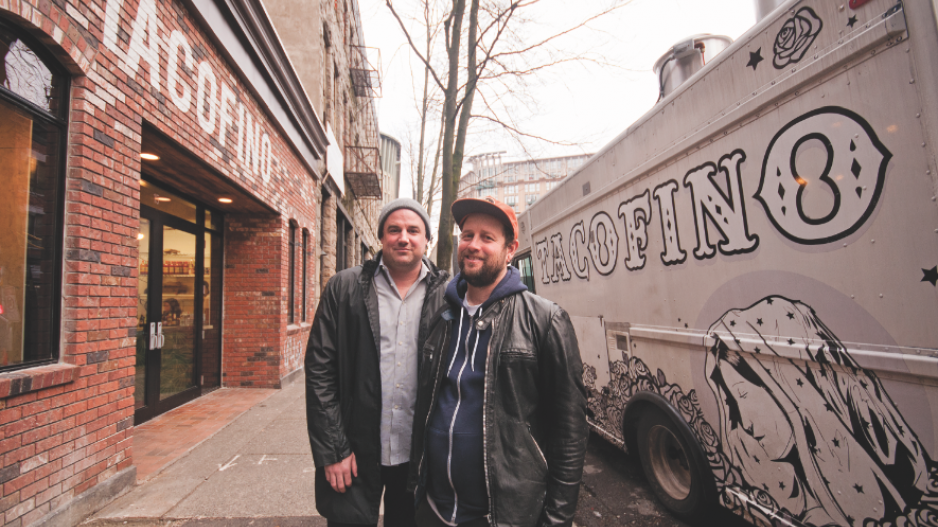Opening a collection of restaurants remains a dream for some but, increasingly, food-service entrepreneurs aim to have multiple revenue streams as a way to achieve stable cash flow.
That means also operating food trucks, catering divisions, commissaries and retail components.
“If you’re a one-trick pony, that’s fine,” said The Reef principal Simon Cotton. “But like with movie stars in Hollywood, its better to diversify and show a range.”
Cotton’s lone restaurant on Main Street sprouted into a chain of three and a catering division before he added a food truck in 2013. He then launched a line of The Reef-branded condiments and marinades and is selling them through Whole Foods Market.
Brand recognition earned through each of those channels helps generate sales through the others, Cotton explained.
Tacofino principal Jason Sussman, who opened the Tacofino Taco Bar restaurant in Gastown on January 9, is one of many who have taken the reverse path – from running food trucks to opening brick-and-mortar restaurants.
Japadog principal Noriki Tamura was a pioneer in this business strategy when he capitalized on strong demand at his Burrard Street hot-dog cart by opening a permanent restaurant on Robson Street in 2010.
That success was then an inspiration for other food-truck entrepreneurs such as Re-Up BBQ principal Michael Kaisaris, who opened a New Westminster restaurant in 2012.
Operators say starting with a food cart makes sense for those who want to avoid debt because the upfront capital cost for food trucks is much less than for restaurants.
“When we first opened Tacofino [food truck] in Tofino in 2009, it cost $30,000,” Sussman told Business in Vancouver. “That truck was what led me on the path to where I am today.”
Sussman and his partners spent nearly $50,000 in 2010 on their first of two Vancouver food trucks and then about $250,000 to open a combined commissary and 40-seat restaurant on East Hastings near Nanaimo Street.
Opening their new 3,000-square-foot space off Blood Alley Square is their priciest project yet.
The 80-seat dining room and lounge, which comes with a 20-seat patio, a takeout Tacofino Burrito Bar and two kitchens, cost more than $500,000, Sussman said.
“We will definitely benefit from the name recognition we have from operating food trucks,” he said.
Indeed, name recognition is largely why diversified restaurateur Vikram Vij operates a food truck.
He bore little cost to enter that niche because he partnered with Gourmet Syndicate, which paid for Vij’s truck, including its signs, and covered costs for an East Vancouver commissary where his food is made.
Still, two years on, Vij has yet to reap any profit.
“As soon as you start hiring chefs for the food truck and are paying them up to $50,000 per year, you start getting into trouble,” Vij said. “You don’t need a full-on executive chef for a food truck but you still need to pay someone $40,000 or $50,000 per year.” •




